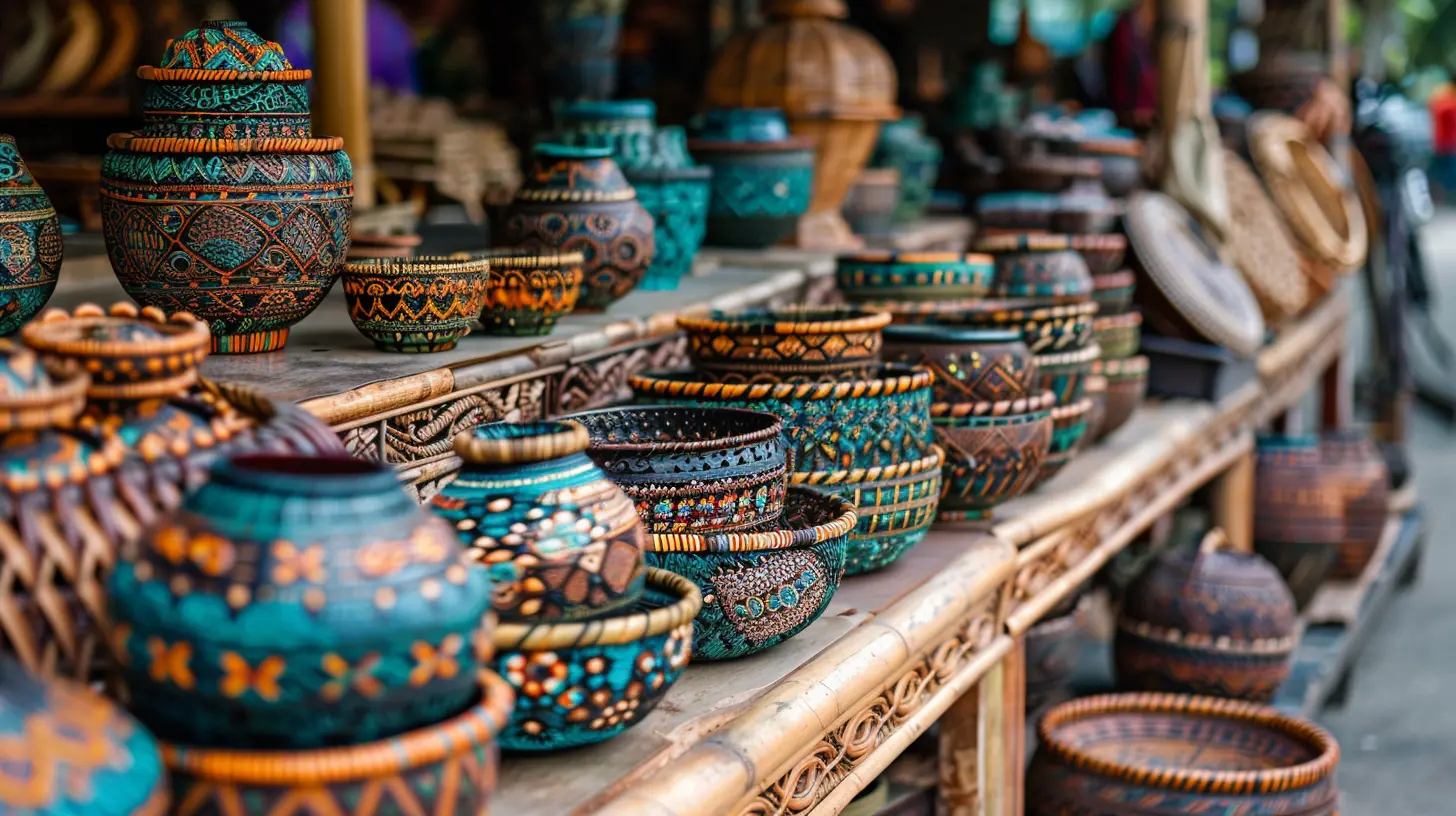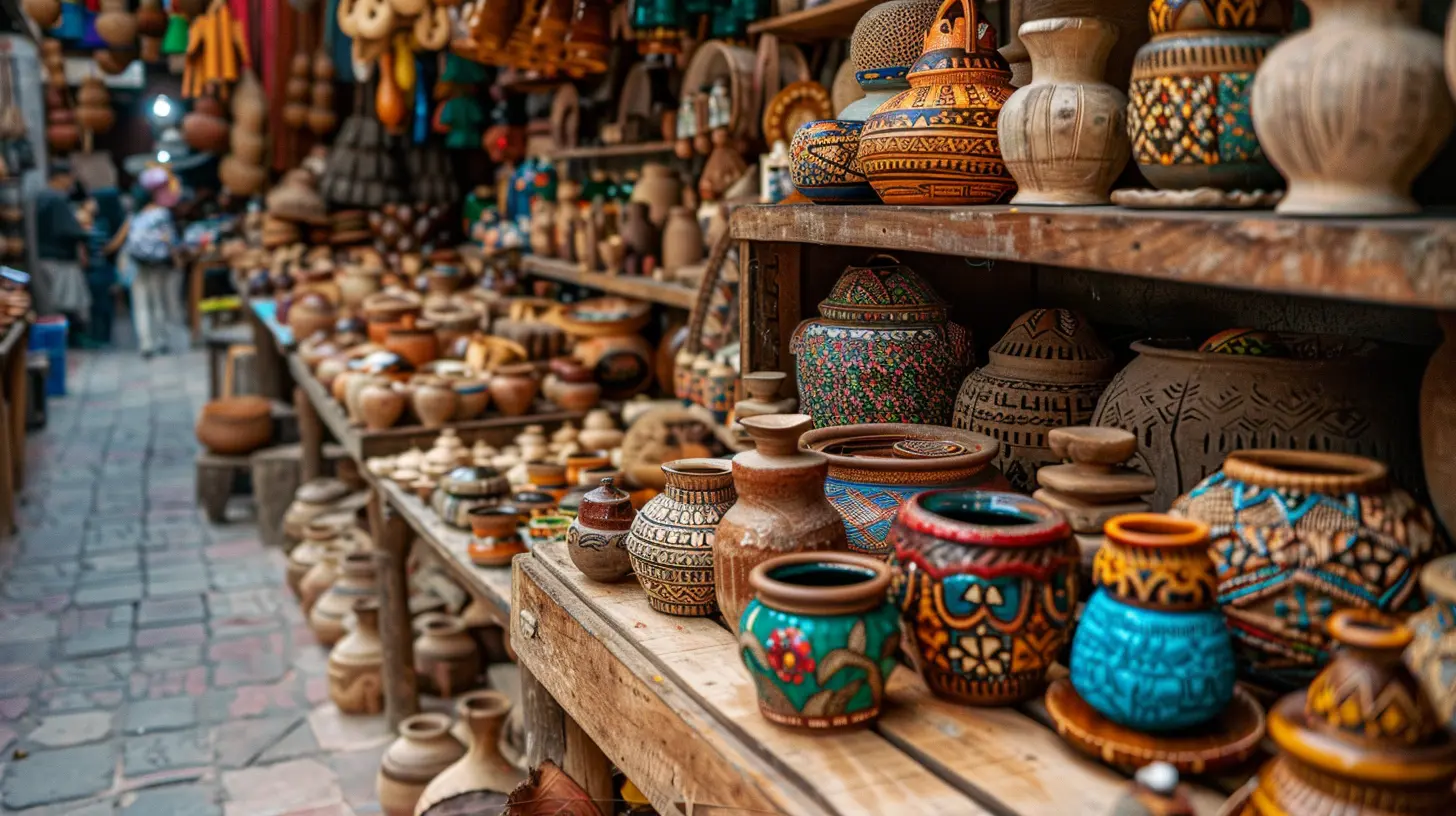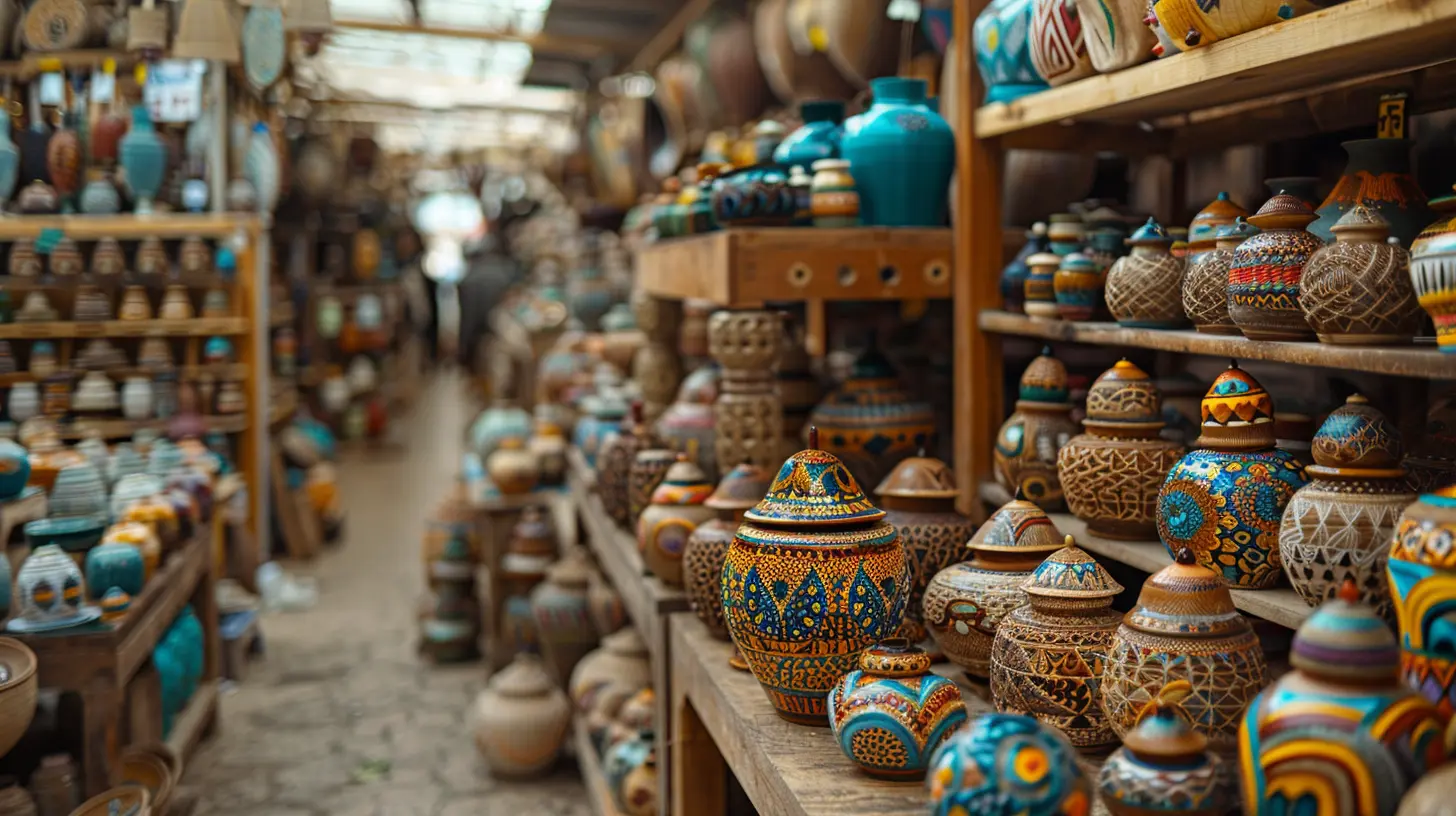Craftsmanship at its Best: Handmade Wonders in Local Markets
29 May 2025
There’s something magical about wandering through a bustling local market, surrounded by the sights, sounds, and scents of artisans at work. Stalls brimming with intricate handmade goods tell the stories of culture, tradition, and raw creativity. Whether it’s finely woven textiles, hand-thrown pottery, or delicate jewelry crafted with patience and skill, these markets showcase craftsmanship at its finest.
Why settle for mass-produced when you can have something truly one-of-a-kind? Let’s take a deep dive into the world of handmade wonders and uncover why they’re worth every penny. 
The Soul of Handmade: What Makes It Special?
Handmade goods are more than just products—they’re pieces of art filled with dedication, passion, and heritage. Unlike factory-made items, each handcrafted piece carries a unique touch that no machine can replicate. But what truly sets them apart?1. Uniqueness at Its Best
No two handmade items are ever the same. Whether it's a hand-painted ceramic bowl or a meticulously beaded necklace, every piece has its own slight variations, making it special and personal.2. A Story in Every Stitch
Behind every handcrafted item is a craftsman pouring hours into their work. Each stitch, brushstroke, or carving tells a story of tradition passed down through generations. When you buy handmade, you're not just getting an object—you’re carrying a piece of history.3. Quality Over Quantity
Handmade products are crafted with care, ensuring durability and attention to detail. Unlike mass-produced items, artisans take pride in their work, using high-quality materials to create something that lasts.
Handmade Treasures You’ll Find in Local Markets
Local markets are goldmines of creativity, offering unique finds you won’t see in department stores. Here are some of the most sought-after handmade wonders.Handwoven Textiles
From colorful scarves to intricately designed rugs, handwoven fabrics are a masterpiece of patience and precision. Skilled artisans spend weeks, sometimes months, meticulously crafting each piece on traditional looms.- Popular in: Morocco, Peru, India
- Why buy it? They add vibrant charm to any home or wardrobe.
Handmade Pottery and Ceramics
There’s something incredibly satisfying about holding a handcrafted ceramic mug in your hands. Pottery artisans mold, fire, and glaze each piece, ensuring no two are exactly alike.- Best spots: Japan, Mexico, Greece
- Why buy it? It’s a perfect blend of art and functionality.
Intricate Jewelry Craftsmanship
Silver, gold, beads, and gemstones—handmade jewelry radiates authenticity and character. Whether it’s a dainty ring or a chunky statement necklace, the skill behind each piece is undeniable.- Famous in: Turkey, Thailand, Italy
- Why buy it? It’s wearable art with a personal touch.
Hand-Carved Wooden Art
Wood carving is an ancient craft that brings nature and artistry together. From decorative figurines to intricate furniture, these pieces reflect a deep-rooted tradition and skill.- Known for: Africa, Indonesia, Eastern Europe
- Why buy it? It adds a rustic, timeless charm to any space.
Artisanal Leather Goods
Ever wondered why handmade leather wallets, bags, and belts outlast factory-made ones? The craftsmanship, tanning process, and quality of materials make all the difference.- Best places: Italy, Argentina, Morocco
- Why buy it? It’s durable, stylish, and ages beautifully. 
Why Supporting Local Artisans Matters
Buying handmade is more than just acquiring a beautiful product—it’s about making a difference. Here’s why your purchase matters:1. Keeps Traditions Alive
Many traditional crafts are at risk of fading away due to mass production. Supporting artisans helps preserve these age-old techniques for future generations.2. Boosts Local Economies
When you buy from local markets, you’re directly supporting skilled artisans and their families. This, in turn, helps sustain local economies and communities.3. More Ethical & Sustainable
Unlike big factories that mass-produce items with questionable labor practices, handmade goods are often crafted in fair working conditions with eco-friendly materials.4. Connects You to the Maker
Knowing who made your product and how it was crafted creates a deeper connection. It’s a stark contrast to buying something off a store shelf with no backstory.
How to Spot Authentic Handmade Goods
With the rise of "handmade-inspired" mass-produced items, how do you ensure you're getting the real deal?1. Look for Imperfections
Handmade pieces often have slight inconsistencies—whether it’s in texture, shape, or color. If it looks too perfect, there’s a good chance it’s mass-produced.2. Ask the Artisan
One of the best parts of shopping in local markets is meeting the makers. Don't be shy—ask them about their process, materials, and inspiration.3. Feel the Texture
Genuine handmade products often have a certain texture that sets them apart from factory-made goods. Run your fingers over textiles, pottery, or woodwork—you can usually feel the difference.4. Check the Price
Handmade items require time and skill, so if the price seems too good to be true, it probably is. Be wary of "handmade" products sold in bulk at cheap rates.Tips for Shopping in Local Markets
Shopping in local markets is an experience in itself, but a little know-how can enhance your adventure. Here are a few tips for making the most of it:1. Arrive Early
Markets get crowded quickly, and the best pieces go fast. Arriving early gives you first dibs on the finest handmade treasures.2. Bring Cash
Many artisans don’t accept cards, so carrying cash—especially small bills—is a smart move.3. Bargain, But Politely
Haggling is part of the market experience, but always negotiate with respect. Remember, artisans have put their heart and soul into their craft.4. Pack a Tote Bag
Reusable bags make it easier to carry your finds and reduce plastic waste—a win-win!5. Take Your Time
Rushing through a market means missing out on hidden gems. Slow down, talk to the artisans, and soak in the atmosphere.Bringing Home a Story, Not Just a Souvenir
Every handmade item carries a little piece of the place it came from—a reminder of history, culture, and craftsmanship. Whether it's a beautifully woven scarf from a Peruvian market or a hand-carved wooden box from Bali, these treasures aren’t just souvenirs; they’re stories waiting to be shared.So next time you're traveling, skip the factory-produced trinkets and step into the world of handmade wonders. Your purchase won’t just be an item—it’ll be a piece of someone's passion in your hands.
all images in this post were generated using AI tools
Category:
Local MarketsAuthor:

Winona Newman
Discussion
rate this article
3 comments
Solstice Cross
Exploring local markets reveals exceptional craftsmanship, showcasing unique handmade products that reflect cultural heritage and artistry—truly a treasure trove for discerning travelers.
June 12, 2025 at 3:46 PM

Winona Newman
Thank you for highlighting the beauty of local markets! They truly are a reflection of culture and artistry, offering travelers a unique glimpse into craftsmanship.
Zella Newton
This article beautifully highlights the charm and uniqueness of handmade crafts found in local markets. Each piece tells a story and showcases the skill of artisans, making these markets a must-visit for cultural enthusiasts and souvenir hunters alike!
June 5, 2025 at 3:05 AM

Winona Newman
Thank you! I'm glad you appreciated the beauty and significance of handmade crafts in local markets. They truly reflect the artistry and culture of the community.
Porter Gray
Buy local: your wallet will thank you!
June 1, 2025 at 2:56 AM

Winona Newman
Absolutely! Supporting local artisans not only strengthens our community but also promotes unique craftsmanship. Thank you for emphasizing the importance of buying local!



